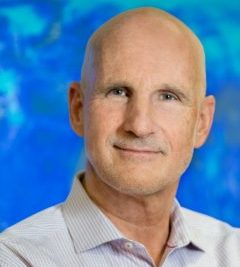Event Recap: Using Computational Tools to Study Sustainability
BY: NATALIE GOLD
Environmental and sustainability research has become more important as the world experiences the effects of climate change. Data science and computational tools allow researchers to create models that analyze these effects. On March 31, 2021, researchers from across Boston University (BU) were given the opportunity to share how computational tools play a role in their work on sustainability and climate change as a part of the BU Knowledge Transfer Series. The series is a collaboration between the Hariri Institute for Computing and BU’s Institute for Sustainable Energy (ISE).
The “Coupled Human-Natural Systems and Behavior” event featured four BU researchers who use data science tools to better understand the effects of climate change and what can be done to create a more sustainable world. This was the third and final event of the Spring 2021 series.

Sucharita Gopal, Professor of Earth and Environment, spoke about using remote sensing data to map out where a type of fish, known as sand lance, live in the ocean. East coastal erosion has increased due to climate change. To maintain beaches, states sometimes bring in sand mined from federal ocean waters. The issue is that this mined sand is often the home of sand lance, and taking away the sand can lead to the loss of substantial numbers of these fish. This in turn takes away food from humpback whales and sea birds who eat sand lance. Gopal wants to use proxy data, such as the surface level temperature, locations of humpback whales, and distance to coastal lines, to map exactly where these fish live to better understand how sand mining affects the ocean ecosystem. Gopal’s team must collaborate with other scientists who have done work on sand lance to get the data they need. These collaborations will help researchers understand what sand mining does to the ocean ecosystem.

Les Kaufman, Professor of Biology, explained that a systems perspective is required to study sustainability. Kaufman said that some people oppose this integrated approach because they think it will make problem solving more difficult, when in fact, it will only make things easier. One issue he touched on was programs and systems studying sustainability not having enough data because the types of data needed for analysis come from researchers doing seemingly unrelated work. With a more integrative approach to research, researchers doing related work could share data that would be difficult for them to collect on their own. This approach also allows for different tools to be introduced to different fields, such as tools that construct models for analysis. Using outside data and systems tools will improve sustainability science.

Cutler Cleveland, Professor of Earth and Environment and Associate Director of ISE, talked through the process of designing an environmental justice screening tool for the city of Boston. Environmental justice screening tools allow people to access environmental and demographic information of specific locations. Such tools can be used to show people if a certain area has high levels of air pollution or contaminated drinking water. Cleveland wants to improve upon past tools by harnessing big data and improving community data accessibility. The tool will also embrace community-based, participatory research so that more people can benefit from understanding their community’s environmental conditions.

Dan Li, Assistant Professor of Earth and Environment, spoke about the phenomenon of urban heat islands. Data from satellites show that cities are hotter than surrounding rural areas. This is due to the heat transfer process in cities. The process is affected by both natural and human factors, including the building materials, building color, and mass transportation. Li is working to create an accurate model of the heat transfer process that can predict the urban microclimate. An accurate numerical model could predict what will happen if certain factors in the heat transfer process change. For example, the model could take into account climate change mitigation strategies implemented by cities and predict what these strategies would do to urban climate. By analyzing climate change mitigation efforts, the model can allow researchers to provide policy recommendations.
After the researchers spoke about their work, there was time for them to discuss how their research could benefit from future collaborations. During this time, the researchers also spoke about the need for more places like the Hariri Institute, that help researchers connect with others working with data that would be useful to their own projects. This collaborative platform enables the multidisciplinary research that so many need to push their research to new places. The convergence of researchers from different disciplines working together to understand climate change leads to transformative results and innovations.
